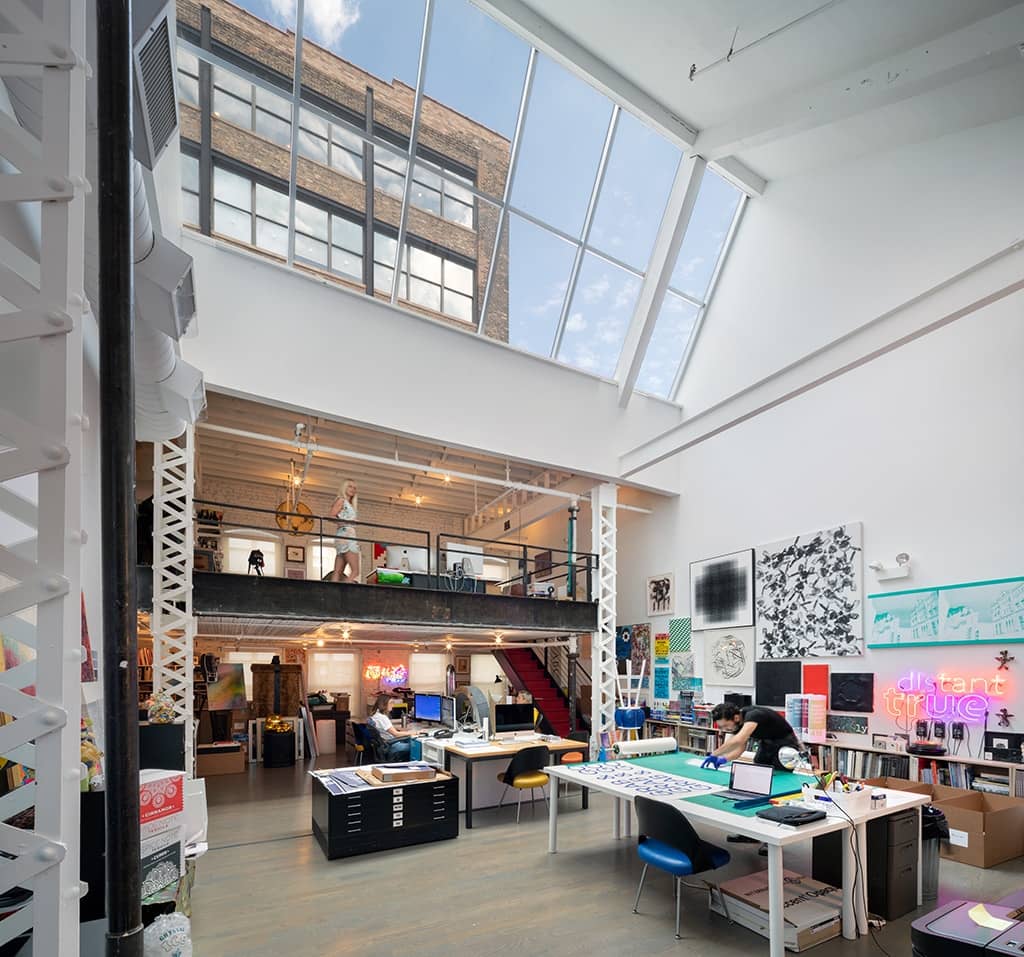The office-to-residential conversion trend has gained solid momentum in recent years, on track to break records in 2025. Considered the most popular type of reuse project today, office-to-residential will account for nearly 42% of conversion in 2025 — up from 38% the year prior. By units, that’s approximately 71,000 of newly converted residential homes across the country. CommercialEdge found that fewer than one in six office properties across the U.S. — or 1.25 billion square feet of office space — are strong candidates for office-to-residential conversion. That’s only 14 percent of the country’s total stock. Leading the nation in this trend is the Big Apple, with 53.1 percent of its office stock in CommercialEdge’s top two tiers for conversions.
One famed office building is following that route, according to Commercial Observer. The Brodsky Organization, GFP Real Estate, and the Sorgente Group are planning to convert New York’ iconic Flatiron Building to residential; it’s a joint venture aiming to transform the property into 60 luxury condominium units. If all goes according to plan, the developers expect to allow homeowners to move in by the end of 2026.
Observations: What’s Driving the Trend?
New York City’s adaptive office-to-residential is changing the face of the local real estate market with more than 8,300 anticipated residential units in the pipeline. That’s roughly 6.1 million square feet of the more than 90 million in available office inventory. Driving this trend are elevated office vacancy rates among Class B and C office products, stagnant return-to-work rates, and declining commercial property valuations. But perhaps the biggest driving factor is the city’s housing crisis. The city’s current housing market is extremely tight with a vacancy rate around 1.4% — the lowest in decades — and record-high rents. The median rent for a one-bedroom apartment increased 6.4% from the previous year. It’s also important to mention the city’s homeless population that surged 53% in 2024.
Together, these factors have created a unique (and pressing) opportunity for developers to repurpose underutilized Class B and C office spaces into much-needed residential units, while also reenergizing local neighborhoods.
Incentives: Legislative and Tax Breaks
New York City has taken proactive steps toward solving the housing crisis and fostering equitable post-pandemic development. In 2023, Mayor Eric Adams announced 11 recommendations from a city task force to help convert unused office space into housing. These recommendations aim to update state laws and city zoning rules to allow for more flexible conversion regulations that could transform 136 million square feet of office space into some 20,000 rental homes over the next 10 years. In December of 2024, the city adopted the “City of Yes for Housing Opportunity” that modernized zoning restrictions to allow for more housing near transit, reducing parking minimums, and enabling office-to-residential conversions — an initiative that could create 80,000 new homes over the next 15 years.
The New York State Real Property Tax Law (RPTL) 467-m, known as the “Affordable Housing from Commercial Conversions Tax Incentive Benefits Program,” is another important program that promotes the conversion of non-residential buildings into dwellings. Through this program, 20,000 residential units are estimated be added to the city’s stock.
Overall, New York City’s ambitious tax and zoning policies seem to be successfully driving office-to-residential conversions. Areas like Midtown East, Downtown Brooklyn, and Long Island City are expected to be key hotspots for these projects, benefiting from their proximity to major transportation hubs, access to business districts, ongoing housing shortages, and competitive rental rates.
There is evidence, however, that return to office is increasing, particularly in newer buildings preferred by some tenants to recruit and retain a workforce — Class A buildings, or those with modern design qualities, the best construction and high-quality building amenities — draw more tenant companies to locate or maintain their offices in those locations and thus have higher occupancy rates than other buildings.
In fact, national office occupancy is at its highest level since the beginning of the pandemic, according to Kastle, recently reaching a Peak Day average of 61.3% of the weekly pre-pandemic average occupancy. We’ve seen more than 90% on peak days in first class buildings. Office occupancy is at its highest level since the pandemic began, recently reaching a Peak Day average of 61.3% of the weekly pre-pandemic average occupancy, with New York City averaging nearly 70% each week. We’ve seen more than 90% on peak days in first class buildings.
Looking ahead, as housing demand continues to rise, the city’s policies surrounding office-to-residential conversions are likely to evolve. These changes are expected to encourage more creative solutions and targeted incentives, further accelerating the transformation of urban spaces.
Opportunities: Key Developments and Investments
Another key incentive for developers taking on a reuse project is initial cost. In general, many office buildings across the country have been selling at lower prices compared to their pre-pandemic values.
Earlier this year, for instance, New York-based developer Savanna acquired 799 Broadway for $255M — a price considered deeply discounted. The transaction marked a loss for Columbia Property Trust and Cannon Hill Capital Partners, who originally developed the 12-story, trophy office building for around $300M.
Reduced acquisition costs and incentives could also help ease financing challenges, and more banks could show interest in these projects — especially when the property is well-located, the developer has a proven track record, and the project is financially viable. With the right financing and design, these office buildings can be transformed into valuable, profitable assets. We expect many of these conversions to become mixed-use developments, fostering dynamic live-work spaces that enhance the city’s vibrant urban character while attracting a diverse range of families and young professionals.
Gaps: What Challenges and Considerations Should Be Addressed?
While this office-to-residential trend presents promising opportunities to address New York’s housing shortage and mitigate the slowing office market, it also brings notable challenges. For businesses still occupying these office spaces, the shift to residential use can cause major disruption and companies may need to relocate or adapt to the changing availability of office space in the city. And, while conversions can help meet short-term housing demands, some experts caution that they could lead to an oversupply of multifamily units in certain neighborhoods over time. There’s also concern about the additional pressure on local infrastructure, such as transportation, schools, and public services.
Financially, conversions can be tricky due to high renovation costs, structural limitations, and the need to redesign spaces to meet modern sustainability standards, making some projects less financially feasible than originally planned.
KBS has considered office-to-housing conversion options in many of the markets in which it invests, but the logistics didn’t make sense. The company opted instead to reinvest its office portfolio, upgrading its older properties to keep them in the Class-A realm.
Conclusion: Could This Trend Be a Blueprint for Urban Redevelopment?
New York’s office-to-residential conversion trend is well-underway and could serve as a model for other major urban centers embracing the reuse movement. Washington, D.C., is already making headlines and ranks second behind New York City with just over 6,500 future converted apartments, followed by Los Angeles, California. Chicago, Illinois, Dallas, Texas, and Atlanta, Georgia, are also adopting this national trend.
While challenges such as costs and regulations remain, repurposing office spaces into homes could present a smart opportunity for investors and developers, especially when local conditions and economic factors align. This trend may not be a one-size-fits-all solution, as each project requires careful planning and due diligence. Nonetheless, it’s compelling to see how cities are adapting and innovating to create sustainable redevelopment models, reshaping urban living for the future.
Learn more by visiting KBS.com/Insights.




